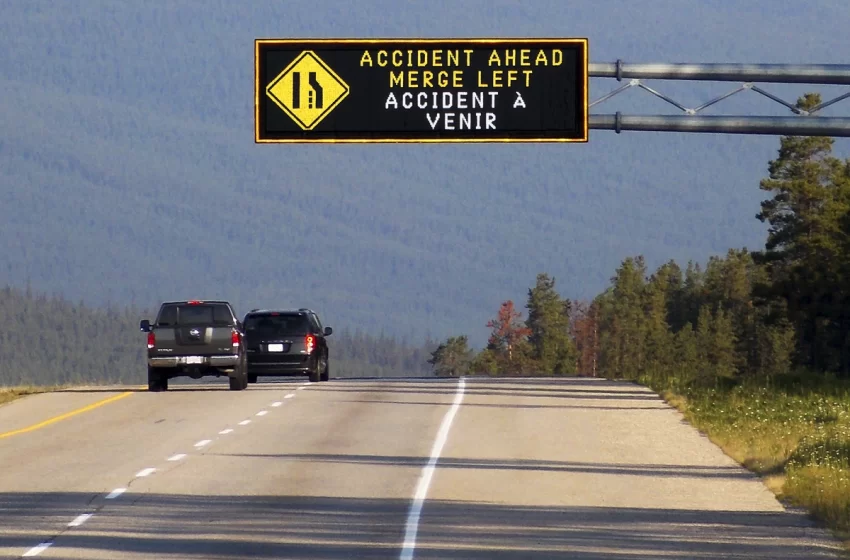
Variable message signs (VMS) are outdoor, portable analog advertising displays with automated functions. A VMS can provide information on everything from marketing to public safety warnings. Typically, a sign consists of an analog display and one or more computer terminals with which messages can be created, changed rapidly, and controlled. These changes are made using the computer terminal or through the use of remote controls. The displays can include graphic screens such as weather maps and digital billboards that infrequently change to create advertising opportunities for businesses in the area. Others, such as traffic message boards, provide live traffic information through text and simple graphics designed to be read at high speeds.
VMS units are often used with electronic car park payment systems and are expected at airports, railway stations, and ports. They are also commonly used at public information centers and other local businesses that wish to give an updated status on their services.
Variable Message Signs can be used in conjunction with electronic signs or dioramas. They are popular choices as national advertising signage, particularly for small businesses, because of the attention to detail and customer communication they allow. A sign may have a VMS that displays specials, employment opportunities, upcoming events, weather or traffic conditions, and government warnings such as high winds and fire danger.

It is common for VMS units to include a monitor with the ability to display digital images, including logos, art, and video clips. This is especially true in locations where the public is expected to be present such as retail outlets and traffic signal control rooms. Many of these units can also be controlled by remote.
Since its inception, VMS has been used for a multitude of purposes. For example, they are commonly used at toll roads to display the length of the queue drivers may encounter on a particular road or bridge. They can also monitor and control traffic, allowing operators to give real-time information about accidents, stalled vehicles, or even mechanical issues along the road or highway. These signs can be upgraded and changed remotely with other messages, such as upcoming construction activity in the area and warnings about extreme weather and temperature changes. These signs are also commonly used in areas with a high risk of natural disasters such as hurricanes and earthquakes.
VMS units are usually located near their terminals. This allows for quick and easy graphical messages that can be received quickly or by displaying static text. This is especially true for educational institutions where it is likely that many services will not be in use simultaneously, making it crucial to show information about student absences and changes to events. In such an instance, even if a message were only updated every few minutes, people would still be ample time to read it and make decisions based on the new information.
The advent of digital signs and the fact that specific messages can include as many as 600 characters in a single display has changed how VMS is used. With the ability to display significantly longer messages, these units are becoming more and more common in smaller, local businesses. They are using these new digital signs for training and other uses, such as a website link to real-time weather conditions within a company. Since their inception, VMS has been used at toll bridges and roads due to their ability to quickly display graphical and text information.








